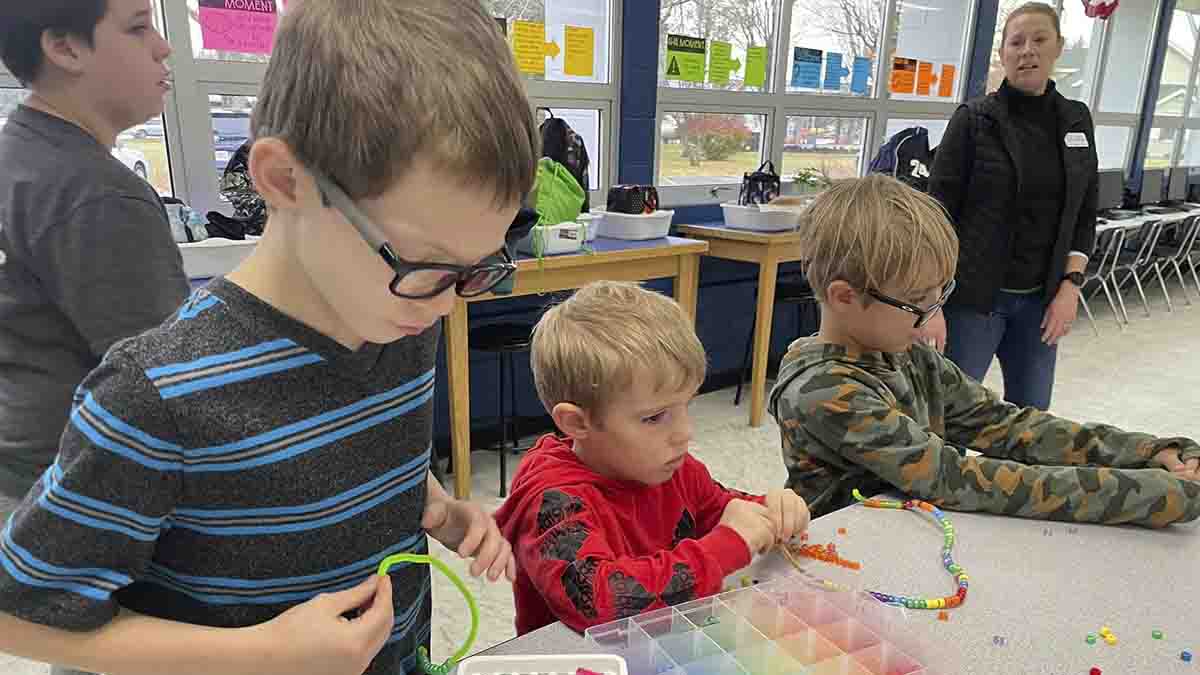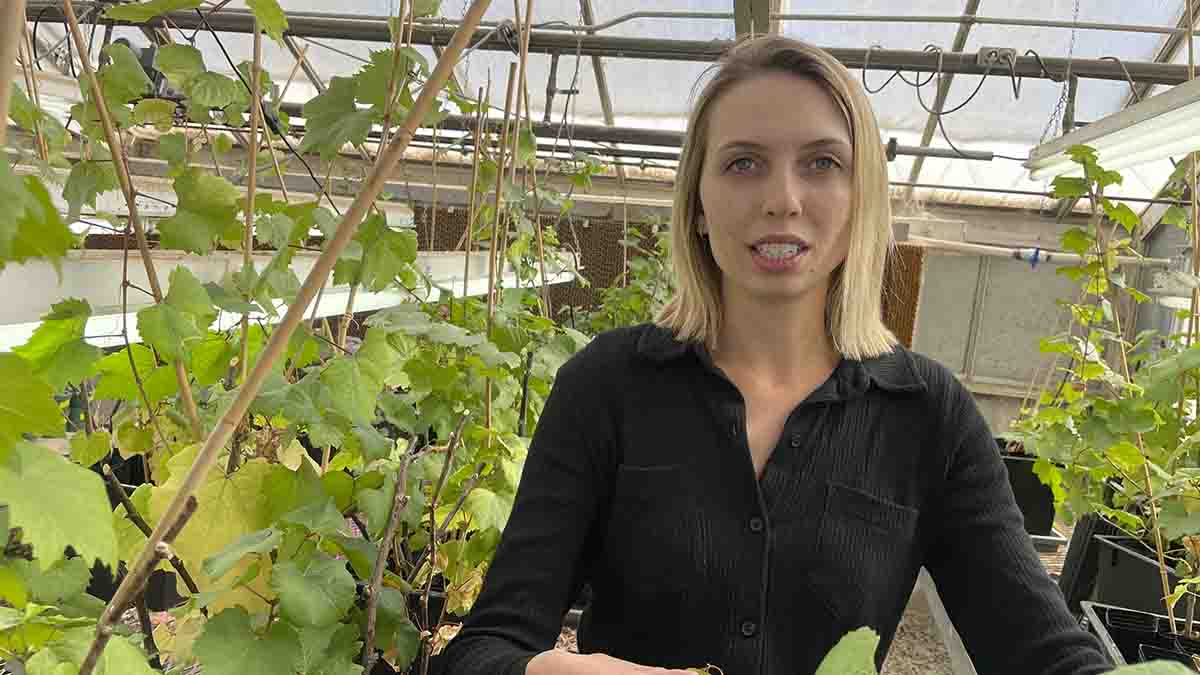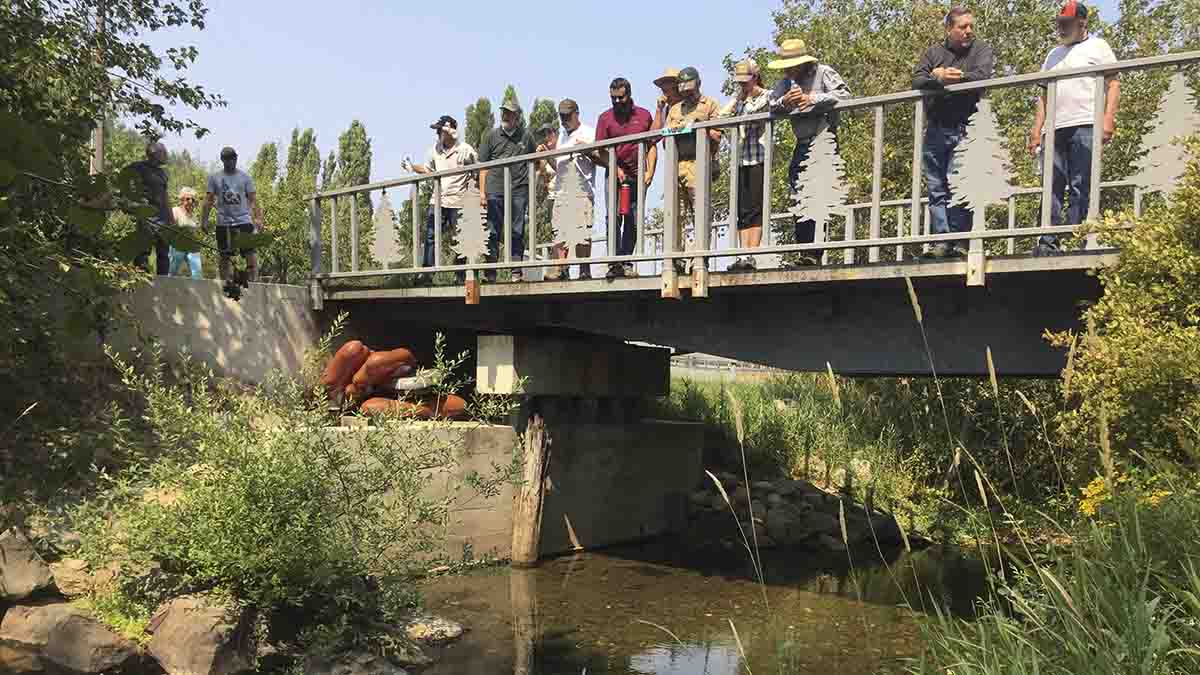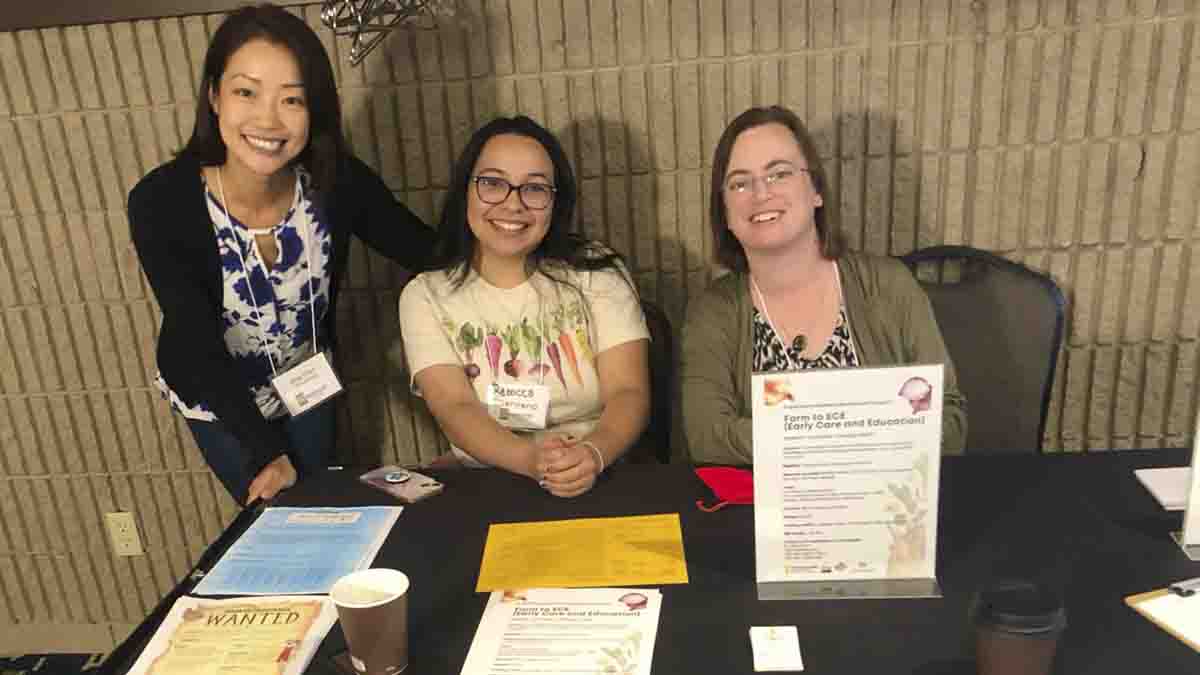Catching Up with CALS — Jan. 24, 2024
Dean's Message — IAMP Worth the Wait
It’s taken a bit longer than we’d hoped to roll out a monumental, CALS-led sustainable agriculture program, funded by the largest grant in University of Idaho’s history. Yet it’s already clear that Innovative Agriculture and Marketing Partnership for Idaho (IAMP) will live up to the hype and will be well worth the wait. IAMP, formerly known as “Climate-Smart Commodities for Idaho,” will receive up to $55 million from the U.S. Department of Agriculture over five years, building cropping systems that are more resistant to changing climates and paying more than half of the funding directly to Idaho agricultural producers. The program will incentivize the state’s producers — with a focus on barley, beef, chickpeas, hops, potatoes, sugar beets and wheat — to implement approved sustainable production practices, such as reducing soil tillage and using alternatives to inorganic fertilizers. The aim is to enroll up to 100,000 acres of Idaho farmland, preventing the equivalent of roughly 60,000 metric tons of carbon dioxide from entering the atmosphere annually while replenishing organic matter in soils. IAMP was among 70 projects awarded nationwide for a combined investment of up to $2.8 billion in the first round of USDA’s Partnerships for Climate-Smart Commodities initiative. Data from all the projects will be pooled to paint a broad, national picture about sustainable agriculture. We’re also excited to generate some of the most complete Idaho-specific data about how sustainable farming practices perform in our state’s unique conditions and with our diverse crop rotations, as well as how they affect weeds, pests and farming operations as a whole.
Incredible progress has been made and a solid foundation is in place to implement the first contracts on farms this spring, with multiple rounds of additional applications to follow. We continue to spread the word about the opportunity at cereal schools, agricultural conferences and other events that draw producers. We’re in the final stages of ensuring our contracts meet the legal requirements and the needs of program partners, including the Idaho Association of Soil Conservation Districts, the Nez Perce and Coeur d’Alene tribes, The Nature Conservancy in Idaho, Desert Mountain Grass Fed Beef and Arrowleaf Consulting. We must also be sure that the practices that are implemented are clear to everyone involved and meet standards of USDA’s Natural Resources Conservation Service. We’ve hired a crack financial team of full-time workers, and our program manager Berkley Ridenhour joined us last November. We’ve invested considerable resources on instruments that will be installed on benchmark farms in Aberdeen, Kimberly and Moscow to help us measure greenhouse gas emission reductions and soil improvements associated with our sustainable practices. Data from benchmark farms will help us to model gains made at partnering commercial farms. Cover crops have already been planted at the Aberdeen benchmark farm. Technical support staff will be hired to take measurements at all three benchmark farms and to work with surrounding commercial farms. Our list of farmers who wish to be notified the moment we begin accepting contracts for the spring continues to grow. We got an indicator of the strong interest in the program when we received applications for a dozen graduate student and three postdoctoral research openings associated with the project — we’re halfway through reviewing more than 400 applications from throughout the world. Based on this off-the-charts response, we’re bound to assemble a sensational team. The CALS faculty who will be guiding the graduate students recently participated in a virtual retreat, where they clarified expectations for each position.
Many in the industry still know the IAMP project by its former “Climate Smart” name, and I’ll throw out yet another moniker — “Grower Smart.” These practices are smart for the grower because they further the cause of maximizing our natural resources and producing more food with fewer inputs. No doubt economic sustainability is key in the broader sustainability picture and optimizing efficiency equates to both increased profitability and a cleaner environment. This grant will also identify new supply chains and new markets for selling sustainably raised commodities at a premium. Undoubtedly, participating growers will continue with many of these practices once they experience how they impact their profit margins, and neighboring farms will follow suit. I’m certain the grant will also result in lasting partnerships enduring long after the funding has expired among project collaborators who previously worked independently on behalf of the Idaho farmer. Furthermore, we expect to bring in many more grants to answer countless questions and new research topics that our project will raise as it generates new science. Co-led by Sanford Eigenbrode, a university distinguished professor of entomology, and Erin Brooks, a professor of agricultural engineering, IAMP promises to be a game changer for CALS, our funded partners and for all of Idaho agriculture. Though agriculture is a smaller contributor to changing climates compared with other sources of emissions such as industry and transportation, agricultural producers are once again taking the lead in finding solutions and CALS is at the forefront of that effort.

Michael P. Parrella
Dean
College of Agricultural and Life Sciences
By the Numbers
University of Idaho Extension had a productive 2023. During the year, 135 UI Extension faculty produced 263 peer-reviewed publications and journal articles. They made 397,435 face-to-face contacts with stakeholders. Their online platforms recorded 693,788 web views, and University of Idaho Extension 4-H Youth Development engaged more than 75,000 Idaho youth in activities.
Our Stories
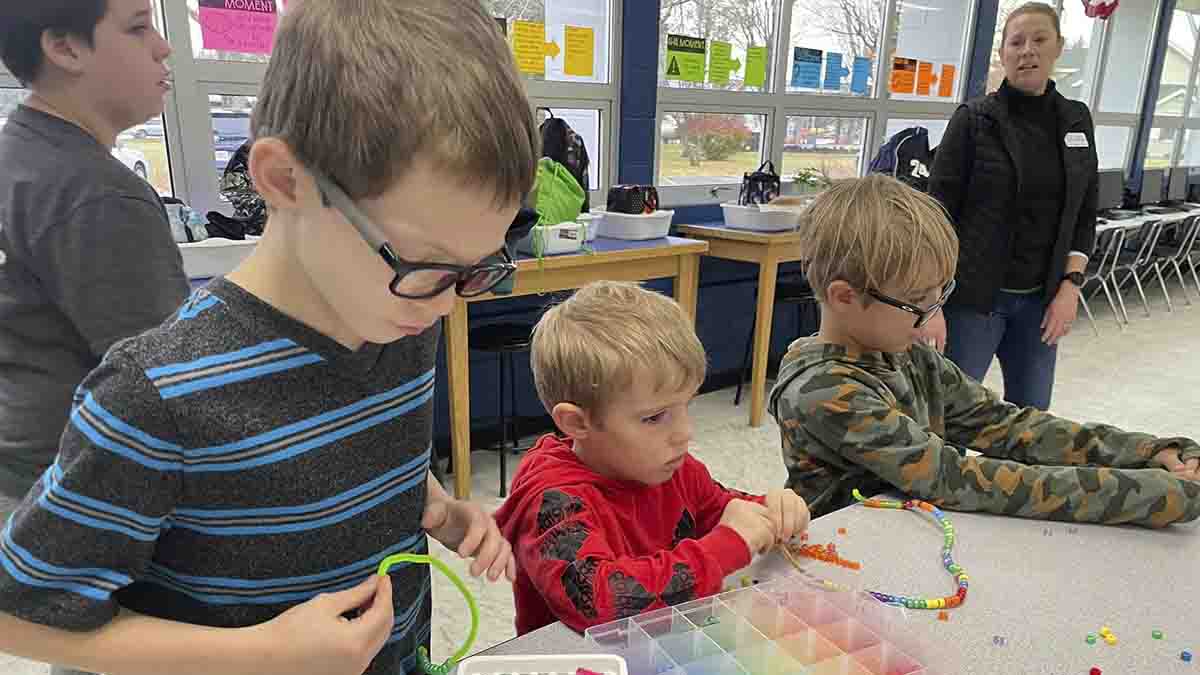
4-H Fridays Filling Need for Parents
It’s been several years since Boundary County School District 101 switched to a four-day week, closing on Fridays for budgetary reasons.
Nonetheless, elementary-aged students in the rural northern Idaho community now look forward to Fridays for especially engaging STEM-based educational lessons and activities, thanks to a University of Idaho Extension 4-H Youth Development program that’s filling a crucial niche for parents.
In partnership with the school district, the UI Extension office in Boundary County launched 4-H Friday Friends in 2006, providing an affordable educational option for students from kindergarten through fifth grade who might otherwise be left to their own devices. The district allows the program to use the library, gymnasium, cafeteria and equipment at Boundary County Middle School. Instruction is offered from 7:30 a.m. to 5:30 p.m. on Fridays during the school year, with open enrollment. Parents are charged anywhere from $5 to $15 per day based on their ability to pay, and students needn’t enroll in 4-H to participate.
Students pack their own lunches but are offered snacks. The program serves 15 students per Friday on average — with much higher enrollment on teacher in-service days when many of the district’s teachers drop off their young children. Roughly 60 students combined use the program each school year.
“Parents really like the program because the flexibility makes it nice. They can drop them off before they go to work, or just if they need to run some errands without their children,” said Amy Robertson, a family and consumer sciences and 4-H Extension educator in Boundary County. “We’re short on daycares — it’s very difficult to even find a spot at a daycare — and quite often they’re not getting the educational programming at daycares.”
Lesson plans using research-based curriculum, with an emphasis on STEM activities, are posted weekly on the 4-H Friday Friends Facebook page.
Many of the program’s activities come from the county’s Think Make Create trailer, which is a mobile makerspace featuring several STEM lessons offered by several partners including UI Extension 4-H Youth Development. Local high school sports teams and clubs volunteer to help run 4-H Friday Friends, as do community volunteers. For example, the local fire department recently showed off a fire truck to the students, an AmeriCorps representative teaches a monthly lesson in robotics and a local baker gave them a demonstration in pastry decorating.
The Extension office employs a part-time program coordinator who oversees the Friday sessions and works additional hours earlier in the week planning curriculum and shopping for snacks. The program also has a part-time assistant who works on Fridays.
Some area home-schooling-based charter schools count 4-H Friday Friends curriculum toward their educational requirements. Robertson has also worked with parents and stakeholders in Priest River, which recently adopted a four-day school week, on creating a similar program.
The program has received funding support from several small grants, including through the Equinox Foundation and The Idaho Community Foundation.
4-H Fridays in Oneida County
Eighth-grader Lyndee Nimer, of Malad, spends Friday afternoons during the school year boning up on equestrian skills, judging livestock and studying the ideal structure of sheep, horses and cattle.
The lessons, offered through a UI Extension 4-H Youth Development program in Oneida County known as 4-H Fridays, are especially valuable to Nimer given that she’s set a goal of becoming a veterinarian specializing in livestock.
It’s been several years since her rural school district implemented a four-day school week to cut costs, and Nimer acknowledges she’d probably be on the couch watching TV all day on Fridays otherwise.
“I look forward to Fridays. I get to do different activities all day long, and I can broaden my knowledge on animals,” Nimer said.
Since 2022, UI Extension in Oneida County has hosted 4-H Fridays at its office located within the county fairgrounds at 459 S. Main St. in Malad. Having a dedicated day for 4-H clubs and activities to meet — and providing parents an opportunity for their kids to do something constructive — has resulted in significant enrollment growth in the southeast Idaho county’s 4-H program. Since 4-H Fridays started, Oneida County’s average 4-H enrollment has ballooned from 120 youth to well over 200 youth.
Youth may also participate in classes on teen leadership, wildlife and artistic activities such as scrapbooking and crocheting. Youth must be enrolled in 4-H to participate in the Oneida County program, and their participation is covered by general 4-H fees.
“The parents have truly appreciated more information being taught to their kids,” said Kelly Sorensen 4-H assistant and UI Extension office manager in Oneida County. “A lot of parents still work on Friday and that leaves youth if they don’t play sports with nothing to do.”
Several community volunteers help run the club meetings and activities, making 4-H Fridays possible.
“I’m a mom who likes to keep my kids involved and engaged in things that help them progress to become better adults,” said Alaina Schrenk, who has four children involved in the program ranging in age from 6 to 13. “There are parents always in here helping with these different activities. There is a community helping to raise your children, and this kind of creates that environment.”
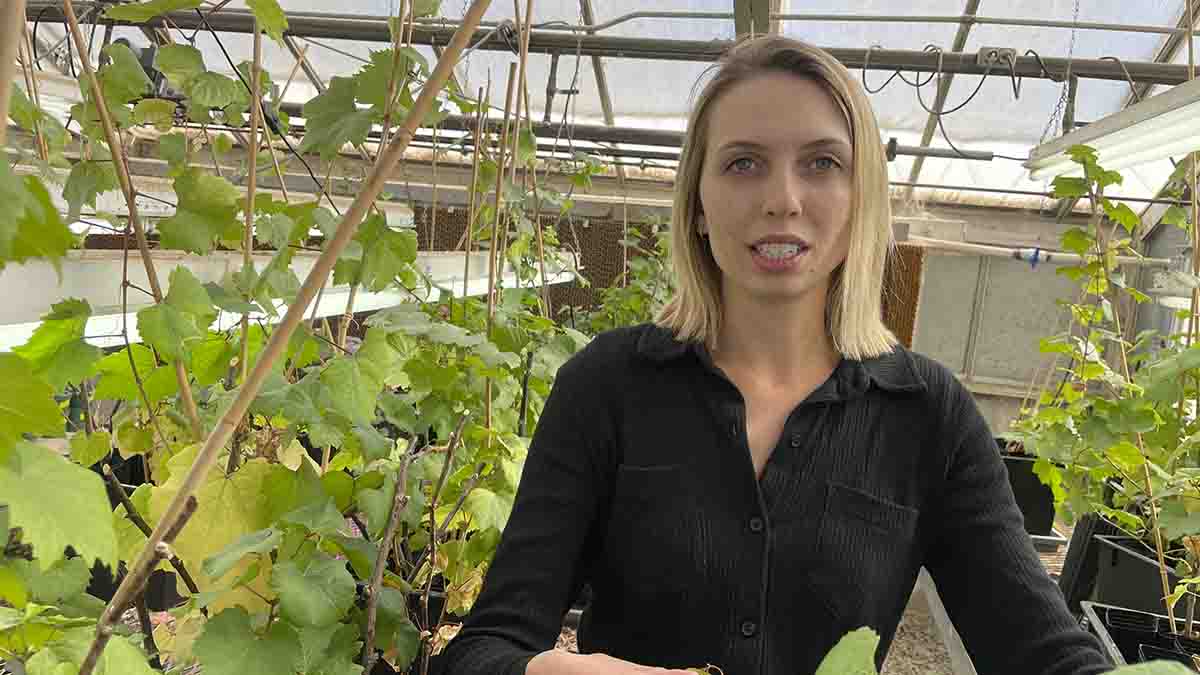
Research Targets Grapevine Trunk Diseases
Idaho grape growers are apt to blame winter kill or herbicide damage when established grapevines die mysteriously within their vineyards.
Madeline Kinnear, a University of Idaho master’s student studying plant pathology, and her advisor James Woodhall, an Extension specialist at the U of I Parma Research and Extension Center, are targeting through their research an often-overlooked culprit — a group of fungal pathogens known as trunk diseases.
Grapevine trunk diseases are found throughout the world and attack the woody trunk and vine tissue of grapevines, entering through wounds such as pruning cuts. A single vine may be infected by a plethora of trunk disease species. In California, trunk diseases have caused billions in estimated losses due to the replanting of sick and dead vines.
For her master’s thesis, Kinnear has taken samples from sick grapevines at several area vineyards, isolating and culturing the fungi they contain to diagnose which trunk diseases are present. The project also entails inoculating grapevines in a greenhouse with those fungi to assess which trunk disease species are most aggressive, which ones may be innocuous and whether certain grape varieties may be more or less susceptible than others.
They intend to develop assays for the rapid detection of the most economically important trunk diseases they identify, and they’ll be trapping spores throughout growing seasons to pair with weather data, which they’ll include in modeling to provide growers with management guidance.
“Grapevine trunk diseases are kind of like a silent killer. You can’t really see them but eventually the whole plant dies over a protracted period. It may take a few years,” Woodhall said. “It’s really important we do this work locally for Idaho so we know what we get here and we know how the diseases will develop in Idaho conditions.”
Kinnear visited 10 area vineyards, taking tissue samples 80 individual grapevines that showed signs of decline potentially associated with trunk diseases. Kinnear found a wide variety of trunk disease associated with viticulture in both cold-weather and warm growing environments, including three of the industry’s top four trunk diseases of concern.
She grew cultures of about 200 fungi species, 16 of which appear to be pathogenic. Of those, 10 were confirmed as known trunk diseases affecting grapevines, and the remainder either affect the roots of the plant or haven’t previously been associated with losses in grape production. Two of the species she isolated from several locations in southern Idaho are known to cause problems for grape growers in the Middle East but hadn’t previously been confirmed in the U.S.
“The wine industry in Idaho is only getting larger. Really the importance of this is for the longevity of the industry,” Kinnear said. “These growers are hoping to put a vine in the ground and keep it there for up to 40 years, and if we don’t have an idea about pathogens that could prevent our growers from reaching their goals then we’re not really doing any favors for the industry.”
This fall, Kinnear began inoculating grapevine cuttings in a greenhouse with many of the trunk disease strains she’s isolated, which should help her determine which ones are most aggressive and pathogenic.
A final component of the project will involve working with Oregon State University researchers to find better biological control options for combatting trunk diseases. During surveys, the U of I researchers have isolated a genus fungi called Trichoderma that’s been deployed for biocontrol of trunk diseases. Rather than using general Trichoderma strains supplied by biological chemical companies, they plan to evaluate local strains, which may be more active against trunk diseases.
The project began in July 2022 with a $100,000 grant from the Northwest Center for Small Fruits Research. Their efforts to develop testing assays and best practices for managing trunk diseases have been funded through the Idaho State Department of Agriculture with $90,000 in U.S. Department of Agriculture Specialty Crop Block Grant funding.
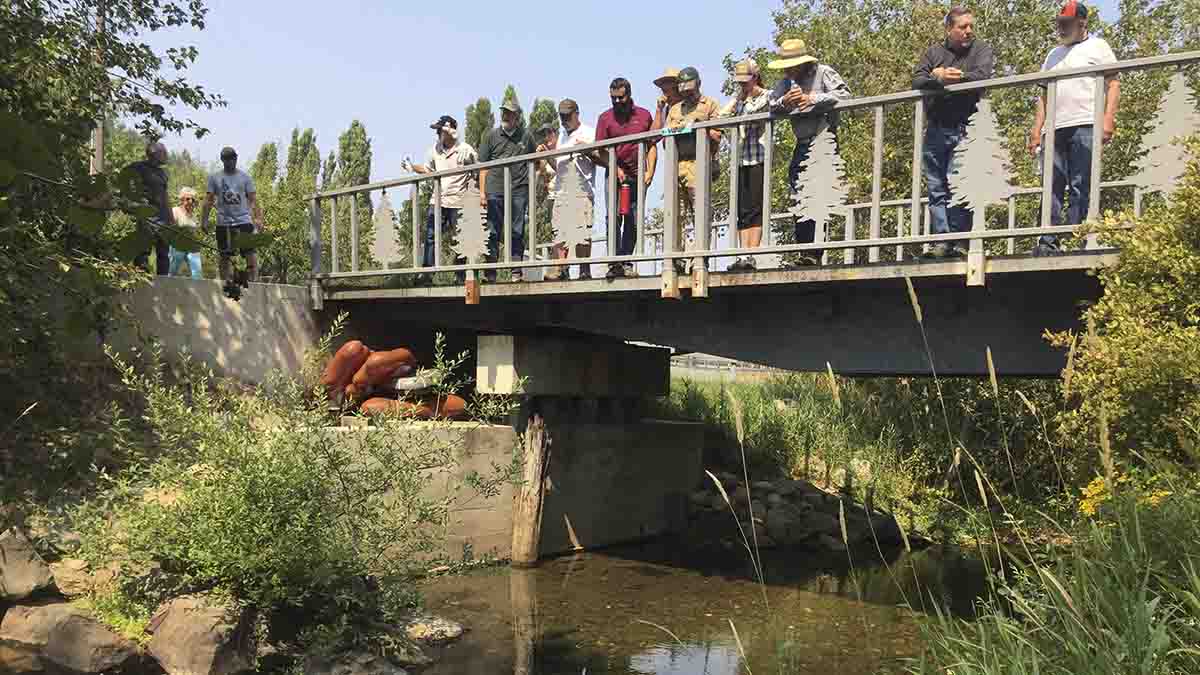
Workshop Teaches Stream Restoration
A University of Idaho-led workshop is helping Idaho landowners transform eroding ditches running through their properties into scenic, riparian corridors that support a diversity of wildlife while capturing and storing water for agricultural use.
It was common practice in the late-1800s for Idaho landowners to straighten streams meandering through their valleys. Channelizing streams made farming easier but resulted in fast-moving flows cutting deeper and wider, drying the water table beneath adjacent marshland.
To remedy mistakes of the past, UI Extension forestry and water outreach programs have partnered with scientists and representatives from local agencies and nonprofits to offer a stream restoration workshop. The workshop — which has now been administered to more than 240 participants in five panhandle counties, plus Latah County — includes a half day of classroom training followed by field trips to stream reaches in various stages of restoration.
A survey of participants of past workshops found 83% intended to regularly monitor their stream health based on what they learned, 78% intended to implement actions to improve the health of one or more streams and 69% planned to work with professionals on stream restoration.
When streams are free to form natural bends and pools, water moves slower and with less erosive force, allowing it to deposit sediment and percolate into the soil, supplementing surrounding shallow water tables. Hay and other crops planted along healthy riparian corridors benefit from the moist soils.
“Nowadays we’re starting to try to slow that water back down again,” said Jim Ekins, UI Extension area water educator, who has run the program since 2018. “These valleys are drying out. Wells within them are drying out, and farmers are not getting a second cutting of hay.”
Organizers have set a goal of conducting at least one workshop in every northern Idaho county, with plans to host them in Clearwater and Benewah counties in 2024. They’re also willing to host workshops in other regions of the state where there’s interest.
Chris Schnepf, a UI Extension area educator specializing in forestry, started the workshop in 2015 with partial funding from an Idaho Department of Lands grant. Members of a focus group he assembled suggested Extension delve more deeply into water quality and stream programs.
Schnepf borrowed some of the workshop content from a six-week short course he teaches on water quality, as well as curriculum from the UI Extension Logger Education to Advance Professionalism (LEAP) program, which is designed to increase loggers’ understanding of forest ecology, silviculture and water quality.
“A lot of this becomes even more important in an era of changing climate where it’s really going to become more important for aquatic species such as trout and salmon and steelhead to be able to move around and find clean-water refuges,” Schnepf said. “A lot of habitat for trout and steelhead isn’t accessible because of barriers.”
Organizers recruit participants by checking where streams flow through private properties on GIS maps or finding addresses of properties with fish-bearing streams flowing through them at local assessors’ offices and sending mailers to the owners.
Workshop participants learn the basics of assessing stream health. An engineer with the U.S. Department of Agriculture’s Natural Resources Conservation Service (NRCS) presents on a range of stream-restoration approaches, ranging from sticking willow boughs along streambanks to take root to more costly stream makeovers involving engineering.
The workshop includes a discussion with a panel of experts from NRCS, local tribes, Idaho Soil and Water Conservation districts, the Idaho Department of Environmental Quality and other agencies. Workshop participants learn about cost-sharing opportunities and other resources that are available to help them implement their restorations.
“The newer way of doing things is using engineered logjams, introducing large organic debris into the stream to slow it down and using natural ways to armor the banks with roots and twigs and things like that,” Ekins said.
To learn more about the workshops, contact Ekins at 208-292-1287 or jekins@uidaho.edu.
Faces and Places
A research article by CALS scientists Martin Baker, Daniel Strawn, Lusine Taslakyan and Gregory Moller on biochar-integrated reactive filtration of wastewater for phosphorus removal and recovery was the cover story of the September 2023 issue of Water Environment Research, the society journal of the Water Environment Federation.
Rebecca Sermeno and Nikki Hodge, who are graduate students in the Margaret Ritchie School of Family and Consumer Sciences advised by Assistant Professor Shiyi Chen, will present their research at the Cognitive Development Society annual meeting in Pasadena, California, in March.
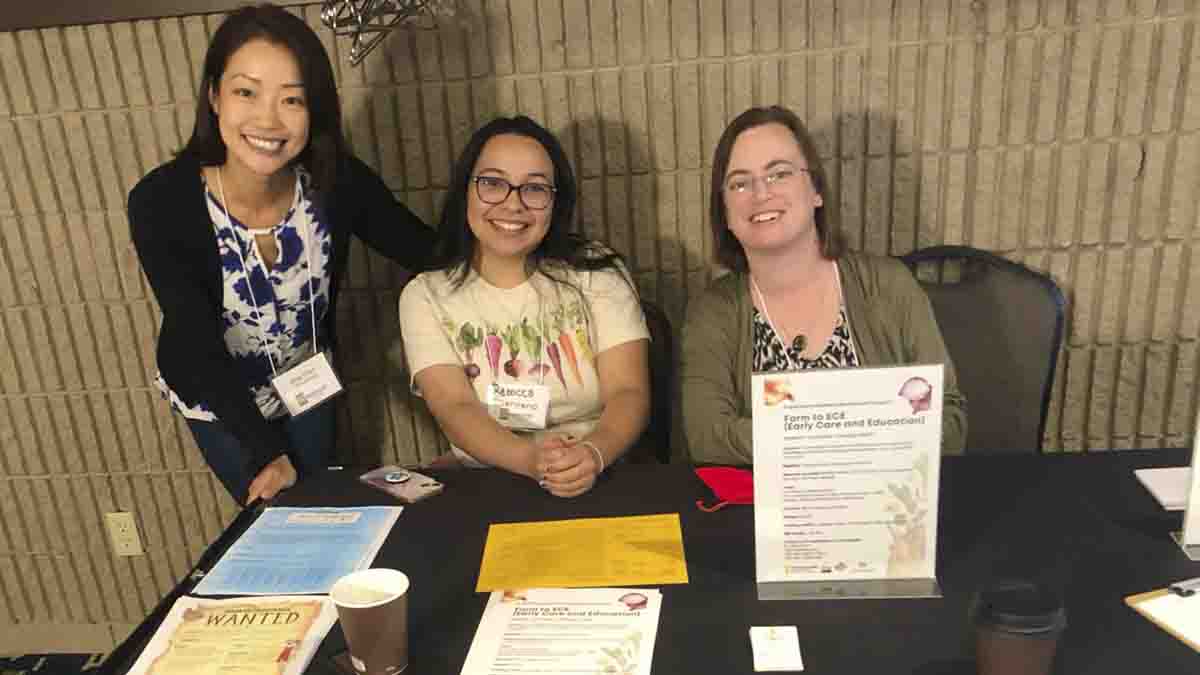
Events
- Jan. 26 — CALS Awards nomination form opens, closes March 4 at 5 p.m. Save the Date: Awards banquet (April 24) registration will open in March
- Feb. 6, 7, 8, 9 — Cereal Schools, Burley, Pocatello, Idaho Falls, St. Anthony, Soda Springs, Preston
- Feb. 17-19 — Know Your Government, Boise
- Feb. 20 — Grand Opening - Idaho Center for Plant and Soil Health, Parma
- Feb. 21 — Heritage Orchard Conference, Sandpoint Organic Agriculture Center, Online







